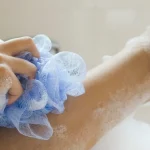One of the most common mistakes people make when cutting their dogs’ nails is getting frustrated — you should never punish your dog if they don’t want to have their nails cut or don’t cooperate with you, said Dr. Douglas Kratt, a veterinarian and past president of the American Veterinary Medical Association. If it’s challenging to cut your dog’s nails at home, it’s best to take them to a professional like a groomer or veterinarian.
Our experts noted that you should be mindful of a vein in the core of the nail called the quick, which contains the blood vessels and nerves. If nicked, the quick can bleed considerably. Since some dogs have longer quicks than others and it can be difficult to locate on the nail, cutting it happens often during at-home grooming sessions.
“The best way to avoid [nicking the quick] is to only trim a little bit at a time [and] check the nail after trimming just the very tip to see if it’s hollow or if you can see any tissue inside,” Fadl explained. “If you’re close to any tissue, stop. If it’s completely hollow, you can probably take a little more.”
Fadl also recommended looking at your dog’s toenails before you start cutting. If they’re clear, you can usually notice the quick pretty easily, which looks like a pink area at the center of the toenail. Dark toenails on dogs can be more challenging, but you can look at the shape of the nail to get an idea of where it is. “Generally, the quick is in the thicker, straighter part closer to the skin — you should only trim the thinner tip that starts to curl,” Fadl said.
If you do accidentally cut your dog’s quick, there are some home remedies to use on the bleeding nail. Certain products like styptic powder can help stop the bleeding and reduce any pain, according to Akhmatova.
How often should you cut your dog’s nails?
Most dogs only need their nails trimmed about once a month, although this varies from dog to dog depending on a variety of factors, including nail growth rate, lifestyle and overall health, according to Fadl. For example, dogs that get plenty of exercise or go on a lot of walks (especially on concrete) tend to wear their nails down, so they may need their nails cut less frequently. Dogs’ nails also grow at different rates, so what’s right for one dog may not be right for another.
Expert tips: Keeping your dog comfortable during a nail trim
To ensure your dog is comfortable with nail trimming, it’s important to get them used to it slowly. Fadl recommended just touching and playing with your dog’s paws at first, which helps desensitize them to having their paws handled. “If they allow it and seem comfortable, offer praise and treats,” she said. After doing this for a few days, Fadl suggested handling the toenails, then graduating to trimming the tip of just one or two nails. “Always offer praise and treats to make it a pleasant experience [and], if possible, have someone else distract your dog with attention during the nail trim,” she added.
Kratt noted to “jackpot” your dog while you’re cutting their nails to get them more accustomed to it. “Jackpotting” is an animal training technique in which you give them a reward like special treats or food when they exhibit a desired behavior like staying still or letting you hold their paws while you’re cutting their nails. Kratt suggested giving your dog a treat they don’t get every day, like peanut butter (without artificial sweetener) or cheese. He said rewarding dogs with one of these more infrequent items allows them to focus on the food rather than their nails being cut.



